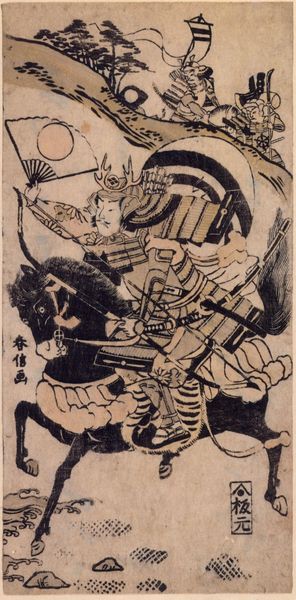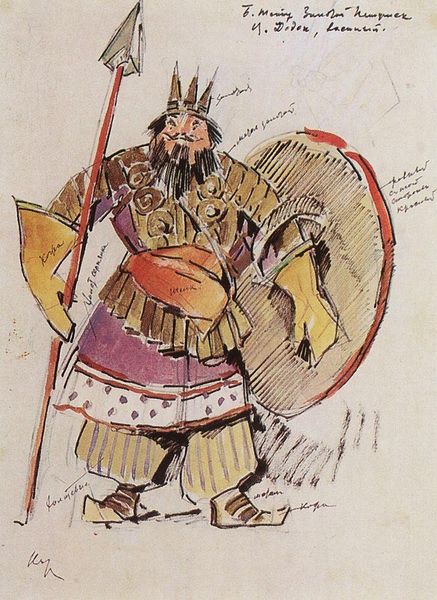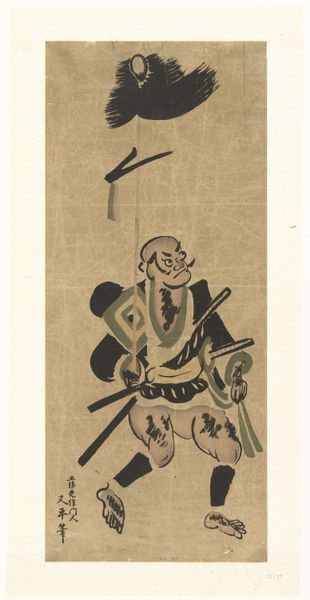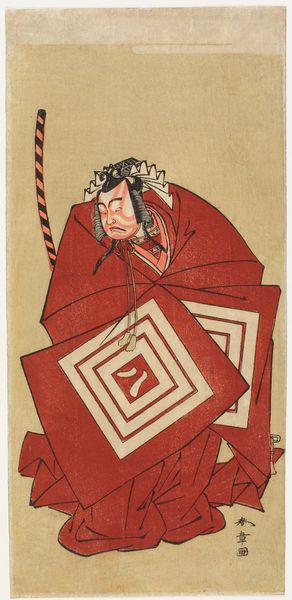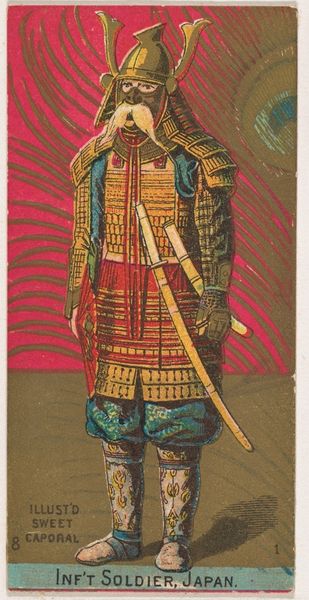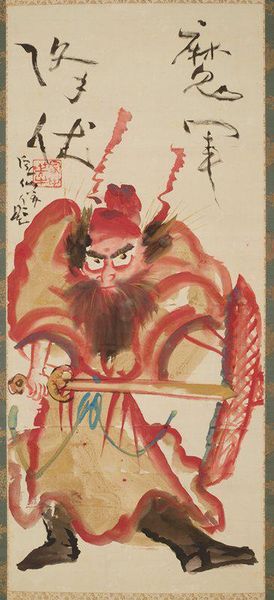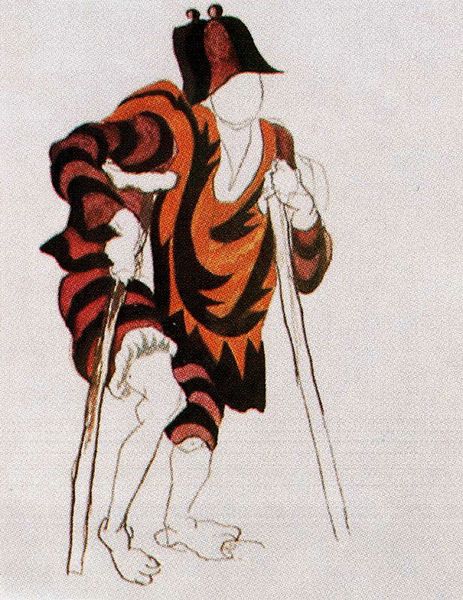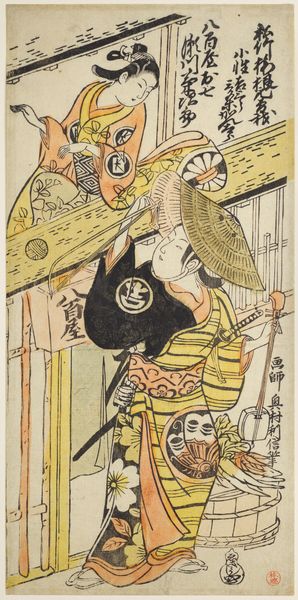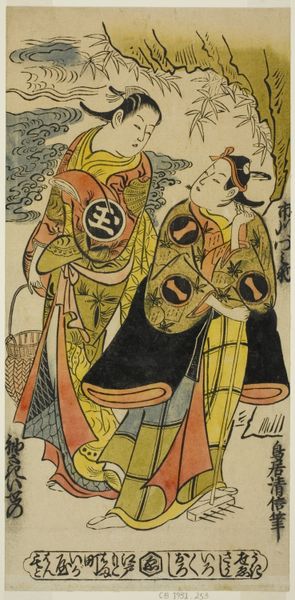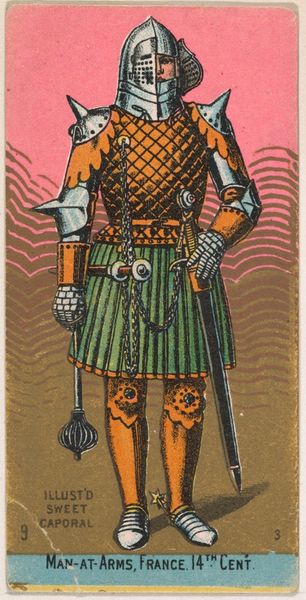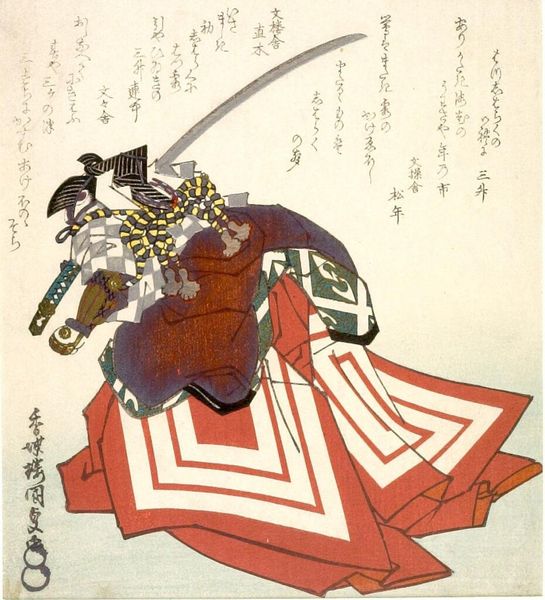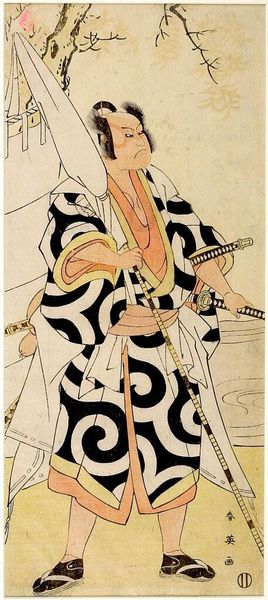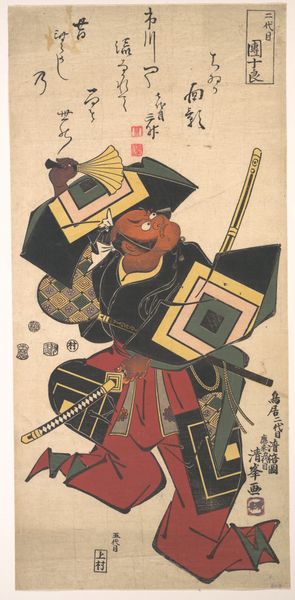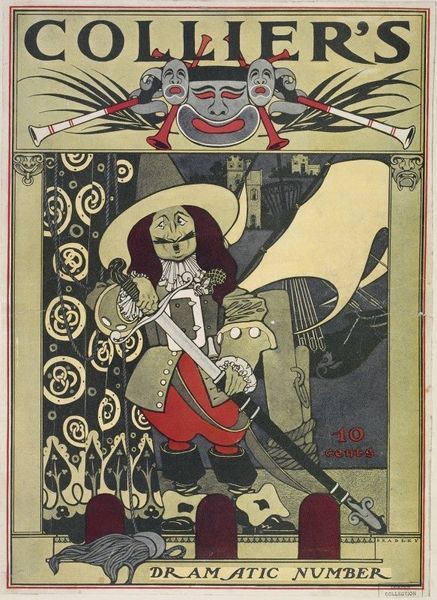
drawing, paper, watercolor, ink
#
portrait
#
drawing
#
soviet-nonconformist-art
#
figuration
#
paper
#
watercolor
#
ink
#
costume
Copyright: Alla Horska,Fair Use
Editor: Here we have Alla Horska's "Warrior of the Golden Horde. Sketch of a Theatrical Costume" from 1963, a watercolor and ink drawing on paper. There's something wonderfully unsettling about the figure’s gaze, almost mask-like, with such vibrant colors used in the costume. What do you see in this piece, considering its historical context? Curator: This work speaks volumes about the cultural constraints placed on artists during the Soviet era, specifically the nonconformist movement. A seemingly innocuous theatrical costume design becomes a subtle act of rebellion. Consider the Golden Horde – a powerful, culturally distinct entity. How does Horska's choice of subject matter, during a period of intense Russification in Ukraine, challenge the dominant narrative being promoted? Editor: So, choosing that subject was a political statement in itself? Curator: Precisely. It subtly invokes a period of Ukrainian history that the Soviet regime preferred to downplay, asserting a separate, powerful identity. And think about the purpose of theatre - it's a public art form. The costume itself, vibrant and perhaps intentionally anachronistic, serves as a visual cue for audiences to consider alternative historical narratives. Can you see how the costume, even in this sketch, plays with perceptions of power and identity? Editor: It does seem to be a deliberate choice. It’s not just a historical costume; it's making an argument. I also see that this artwork doesn't seem to glorify soviet ideals or the russian cultural agenda. Curator: Exactly! Horska wasn't simply designing a costume; she was engaging in a visual dialogue with the state about history, memory, and Ukrainian identity. The very act of portraying a non-Russian, powerful historical figure in such a striking way becomes an act of cultural resistance. Editor: I never would have considered the complexities behind a theatrical costume design. It really shows how deeply art can be intertwined with politics and cultural identity. Curator: Indeed. Art serves as a mirror reflecting, and sometimes refracting, the socio-political realities of its time. Looking beyond the surface reveals hidden layers of meaning and resistance.
Comments
No comments
Be the first to comment and join the conversation on the ultimate creative platform.
